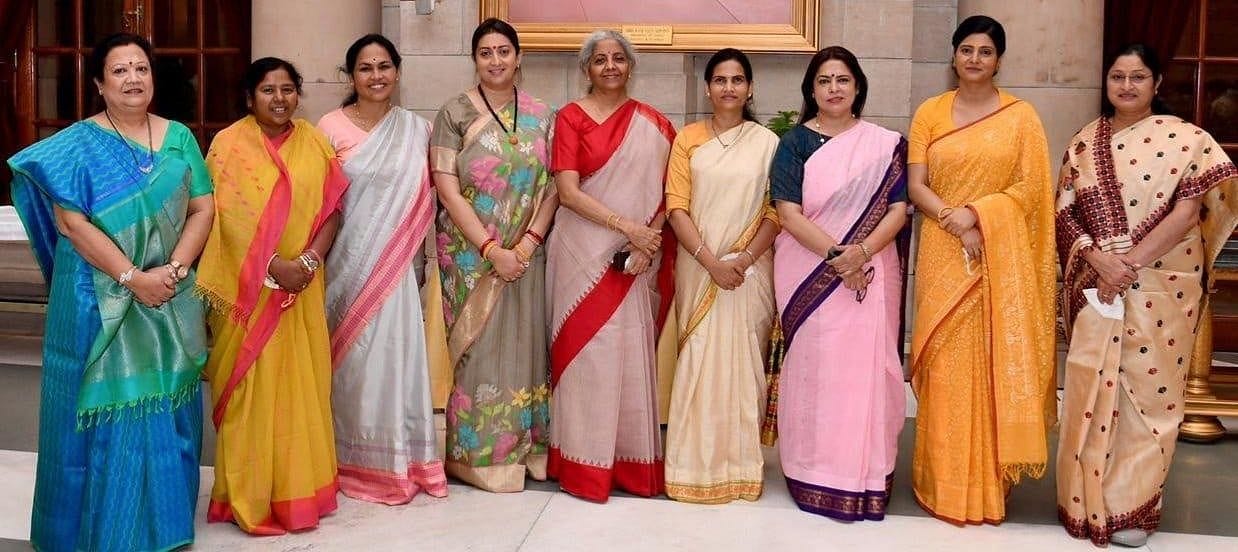It's official. India's gender gap is growing.
Congratulating your great great great granddaughter. Not.
Hello ji,
Every year, the World Economic Forum comes out with a Global Gender Gap Report which ranks the countries of the world based on how well they performed on closing the gender gap on various dimensions.
Last year, India ranked 112 out of 153 participating countries.
This year, India’s rank slipped 28 places to 140 out of 156 nations.
Of course, we understand that this is disturbing. But we also know how boring it is to read long reports. The harsh reality is that no one - other than the people paid to do it - has the time to read such reports.
So, I read it for you.
And this week – in a departure from our usual storytelling – I will take you through what this report says.
The aim of this issue is to give you a glimpse of what womaning in India is truly like.
Hopefully, without killing you with boredom.
Why should I care about this report?
In India, we don’t hear about such global rankings on the news in our country unless we are (ahem) shining. And yet, here are a couple of reasons why this ranking is important and why we should be talking more about this one.
1. We are VishvaGuru. Or, at least, the Vishva(procreation)Guru.
On a planet of 700 crore (7 billion) people, India’s population is about to hit the 140 crore (1.4 billion) mark.
This means, that India is home to about 70 crore women (a bit less than that, actually, for reasons we will get into shortly.)
Given our large population, India falling down the ranks means that the gender gap of the entire world suffered a massive hit last year.
2. The only nations worse than us in our sub-continent are the ones ruled by Taliban and Taliban.
India is the third-worst performer in the South Asia region, with only Pakistan and Afghanistan ranking lower than us.
It is estimated that, at this pace, South Asia will achieve gender equality in a short 200 years.

3. We are heading in the wrong frickin’ direction
But wait, before you pop open a champagne for your great great great granddaughters, note that the trend is actually reversing.
That’s right. Instead of closing, we are widening the gender gap.
And the global leader in this respect is none other than us. Over the last year, India’s gender gap has widened from almost 66.8% closed to 62.5% closed.
So basically, let your great great great granddaughter know that the delivery of her equality order will be delayed by another century or two.
What the report says
The World Economic Forum ranks countries based on their performance on four indices of gender equality:
1. Economic Participation and Opportunity
India ranked 151 - Down from 149 last year
India’s Economic Participation and Opportunity gap between men and women has widened by 3% in this last year.
Only 22.3% of Indian women participate in the labour market (down from 24.8% last year). Which is not surprising given how many Indians lost their jobs in the pandemic year.
Even among the rare few women who are fortunate to have jobs in the organized service sector, the burden of caregiving has been so high in this last year that it is no surprise that the percentage of women has been disproportionately high among these job losers.
A woman I interviewed last year told me that the only free time she gets all day are the few minutes she has to wait in the bathroom for her bucket to fill before her bath. (Full piece)
Not that the scene is a lot better among the few women who managed to hold on to their jobs for dear life. Picture this:
30 out of 100 technical roles are held by women, of which merely 15 hold senior positions. Only 9 out of 100 Indian firms have female top managers.
The average Indian woman earns one-fifth of what the average Indian man does, which puts India among the bottom 10 globally on this indicator.
2. Educational Attainment
India ranked 114 - Down from 112 last year
India’s female literacy rate is only 65.8%, which means that one-third of Indian women are illiterate. The proportion of illiterate men, in comparison, is only about one-sixth.
To be fair, we were heading in the right direction until last year, with improvements shown in all sectors - primary, secondary and higher education. But the pandemic has hit girl students disproportionately hard.
According to an RTE forum report, 1 crore girls are at risk of dropping out of school permanently as a direct result of the pandemic.
With 16 lakh girls aged 11 to 14 years currently out of school, the pandemic could disproportionately impact girls further by putting them at risk of early marriage, early pregnancy, poverty, trafficking and violence.
3. Health and Survival
India ranked 155 - Down from 150 last year
Now, here is why 50% of India’s population is not female.
“China and India together account for about 90%–95% of the estimated 1.2 million to 1.5 million missing female births annually worldwide due to gender-biased prenatal sex selective practices. Further, China, India and Pakistan register excess female mortality rates (below age 5) related to neglect and gender-biased postnatal sex selection practices.”
So yeah. We either don’t allow our daughters to be born, or don’t let them to survive to adulthood.
Another highlight that makes our performance poor on this indicator is the fact that more than one in four Indian women has reportedly faced intimate violence in her lifetime. “Reportedly” being the key word there because most gender-based violence - especially the kind perpetrated at home - goes unreported.
The icing on the cake - the Chhattisgarh High Court recently ruled that marital rape is completely legal in India. Something to look forward to in our ranking next year.
4. Political Empowerment
India ranked 51 - Down from 18 last year
This is the indicator on which India has seen the largest fall over the last year.
India actually ranks among the countries where women are found in the head-of-state position more frequently than the norm, and yet, this is index is the one where the country has slipped the most in its ranking so far.
One of the primary causes for this is that our share of women ministers declined the most - from 23.1% to 9.1% - this year.
The current government kicked off its first term in 2014 with 7 women Ministers in the Council of Ministers.
At the beginning of their second term in 2019, the number fell to 6.
However, this year’s reshuffle has raised the number back to 11.
There was much song and dance in the media about how this number was the highest in 17 years (7 of which are the same government’s, of course).
The increased representation is definitely a positive sign, even if it is too much of a coincidence that it came close on the heels of this steep fall in our gender rank.
That said, women continue to fare abysmally in terms of representation in the upper levels of India’s bureaucracy, legislature, and judiciary - as this article well elucidates.
The article also highlights how the Ministries handed to women Ministers are usually the “softer” ones like Women and Child Development. Social Empowerment and Justice, Tourism and Culture.
The heavyweight Ministries remain safely ensconced in able male hands:
Women have been largely excluded from ministries such as defence, heavy industry, railways, transport, and agriculture that corner most of the government’s budget.
So, in a nutshell.
We are still not allowing Indian girls and women the same access to education, healthcare, workforce participation, or political representation as the boys and men. India will take more than 200 years to achieve gender equality but I can’t say that will happen at the current pace because the current pace is actually headed in the opposite direction with the gender gap increasing last year.
Of course, all of these are problems only for those girls who we allow to be born at all.
But hey, at least we are doing better than Pakistan.
Mahima
This newsletter comes to you free of cost. But that does not mean that it costs nothing.
If you like the work I am doing with it, show me your love by buying me a coffee. Click ‘Membership’ or ‘Support’ on:
You can find Womaning in India on Instagram, Facebook, Twitter, LinkedIn, and Clubhouse.












